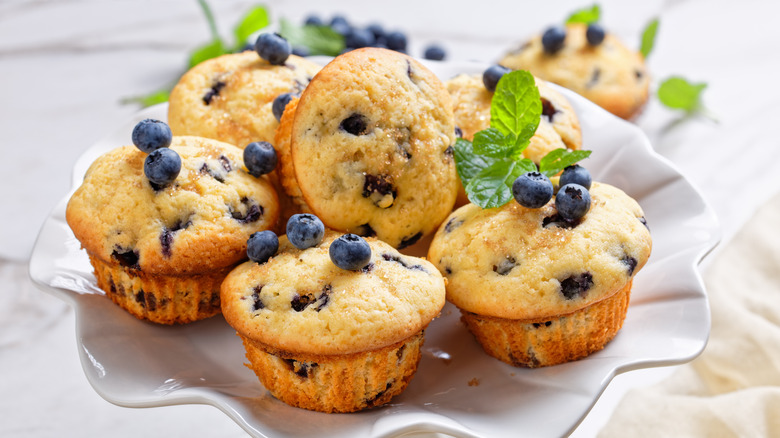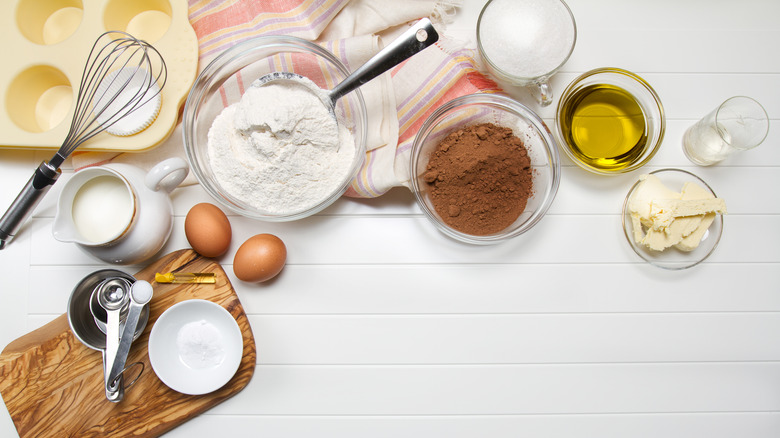When Adding Baking Soda To Blueberry Muffins, Don't Forget The Vinegar
Blueberry muffins are a fan favorite for breakfast eaters, supplying a fluffy cake crumb dotted with moist blueberries bursting with a juicy pop of tangy flavor in each bite. Blueberry muffins are a baked good, and as with many cake, cookie, and bread recipes, they need at least one leavening agent to achieve a light and airy crumb. Baking soda is a common leavening agent you can add to your blueberry muffin batter. However, when adding baking soda to blueberry muffins, don't forget the vinegar!
Vinegar and baking soda are an indispensable pairing because the chemical reaction between the two is the key to effective leavening. Baking soda, also known as sodium bicarbonate, is an alkaline compound and a base, whereas vinegar is an acid. When the two combine, they create a fizzy mixture full of carbon dioxide, which is the gas that causes the bubbling and the mechanism by which muffin or cake batter rises and achieves a fluffy, airy crumb.
The general rule of thumb for blueberry muffin batter, or any other batter, is to use a ¼ teaspoon of baking soda and ½ teaspoon of distilled white vinegar for every cup of flour. You can add the baking soda to the dry ingredients and the vinegar to the wet ingredients. When you mix the wet and dry ingredients, you will activate the reaction necessary for the muffins to rise beautifully in the oven.
Baking soda vs baking powder
Baking powder combines baking soda and cream of tartar to create the balance of acid and base you'd get by adding vinegar. While you might think the two are interchangeable, they require completely different proportions and are thus a lot harder to swap. Most recipes use either baking soda or baking powder, but you can also use both leaveners in a single recipe to uphold the tanginess of an acidic ingredient like buttermilk or yogurt. Baking soda will work well to accentuate the tanginess of yogurt in our recipe for cardamom blueberry muffins.
For classic blueberry muffins, most recipes opt for baking powder because there's no additional acid in the other ingredients, and the acid in blueberries won't leech out enough during the baking process to react with the baking soda. However, baking soda and vinegar will work just as successfully without affecting the flavor of the crumb. Because you're balancing a base with an acid in the vinegar and baking soda duo, the baking soda will mask the tartness of the vinegar.
Baking soda loses its leavening capacity after a few months, so it's always important to check it before adding it to a recipe. Coincidentally, you can use vinegar to test baking soda's viability by adding a dash of baking soda to a little vinegar. If the baking soda bubbles, it's still good for use as a leavening agent.

